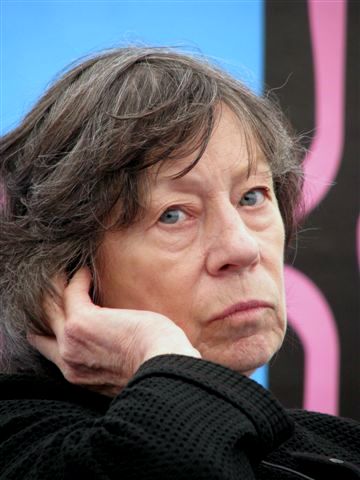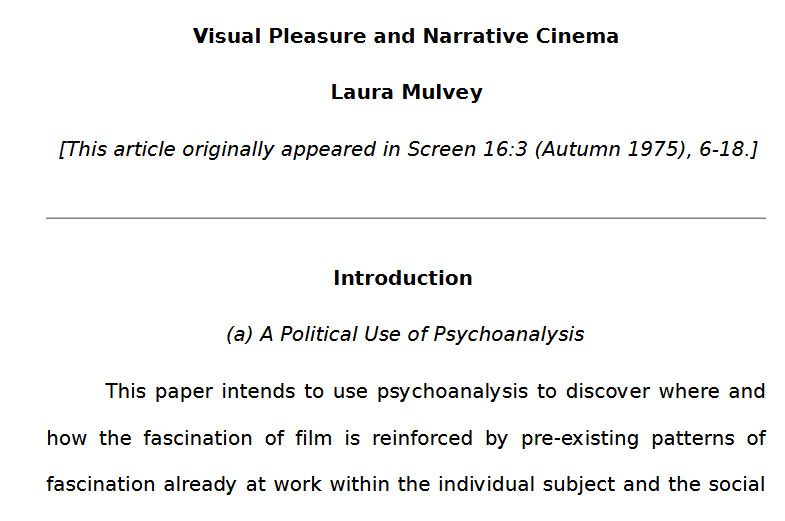Laura Mulvey is a British academic and feminist film theorist best known for popularizing the idea of “the male gaze”. While the term was originally coined in 1972 by art critic John Berger, Mulvey is most often associated with discussion of the male gaze – and subsequently the female gaze.

In her 1973 essay “Visual Pleasure and Narrative Cinema“, originally published in 1975 in the film journal Screen, Mulvey uses a psychoanalytic framework to discuss how an audience views a film. She uses the Freudian idea of “scopophilia”, meaning the pleasure gained from looking and being looked at. Her essay asserts that classic Hollywood cinema positions the viewer as automatically masculine, prompting the viewer to identify with masculine concepts and male characters. Female characters on screen are to be viewed as objects of desire or seen as somehow “other”.
Mulvey also surmises that there are three ways of looking within the boundaries of cinema:
1. The way the camera records and event
2. The way the viewer watches what has been filmed
3. The way the characters look at each other within the film.
A few quotes from the essay:
In a world ordered by sexual imbalance, pleasure in looking has been split between active/male and passive/female. The determining male gaze projects its fantasy onto the female figure, which is styled accordingly. In their traditional exhibitionist role women are simultaneously looked at and displayed, with their appearance coded for strong visual and erotic impact so that they can be said to connote to-be-looked-at-ness…
An active/passive heterosexual division of labor has similarly controlled narrative structure. According to the principles of the ruling ideology and the psychical structures that back it up, the male figure cannot bear the burden of sexual objectification. Man is reluctant to gaze at his exhibitionist like. Hence the split between spectacle and narrative supports the man’s role as the active one of forwarding the story, making things happen… As the spectator identifies with the main male{1} protagonist, he projects his look onto that of his like, his screen surrogate, so that the power of the male protagonist as he controls events coincides with the active power of the erotic look, both giving a satisfying sense of onmipotence…
There are three different looks associated with cinema: that of the camera as it records the pro-filmic event, that of the audience as it watches the final product, and that of the characters at each other
within the screen illusion. The conventions of narrative film deny the first two and subordinate them to the third, the conscious aim being always to eliminate intrusive camera presence and prevent a distancing awareness in the audience.
While Laura Mulvey’s essay is often discussed in film courses, it has attracted criticism because it is somewhat dated and exclusive. The essay takes something of an essentialist view about the nature of men and women and how they might view things. It also excludes the possibility of non-white and non-heterosexual viewers. Mulvey replied to criticism in her essay “Afterthoughts”, pointing out that her piece was meant to be a provocative and political piece of writing rather than an advanced academic treatise.
Laura Mulvey has since written about how changes in the delivery of entertainment (from cinema to DVDs) have altered how the viewer interacts with the film.
Read more:
Film Inquiry article – Laura Mulvey and the male gaze theory
Another Gaze – Interview with Laura Mulvey
